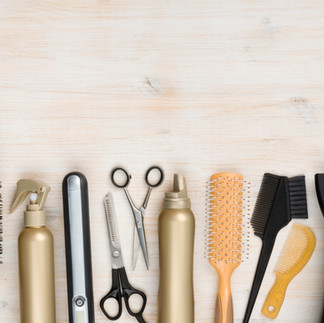Best Sanitizing Practices for Beauty Professionals: Ensuring Client Safety
- Leticia Davis
- Apr 1, 2024
- 2 min read
In the beauty industry, maintaining a clean and sanitized environment is paramount for both the professionals and their clients. Whether you’re a stylist, makeup artist, barber, or nail technician, implementing rigorous sanitizing practices is crucial for preventing the spread of germs and ensuring the well-being of everyone involved. Here are some of the best sanitizing practices that beauty professionals should adhere to when servicing their clients and reusing equipment:
Hand Hygiene: Before and after each client interaction, it’s essential for beauty professionals to wash their hands thoroughly with soap and water for at least 20 seconds. Additionally, alcohol-based hand sanitizers can be used between clients to disinfect hands effectively.
Disinfecting Tools and Equipment: Combs, brushes, scissors, tweezers, and other reusable tools should be cleaned and disinfected after each use. Non-porous tools can be sanitized by immersing them in an EPA-approved disinfectant solution for the recommended contact time. Porous tools, such as makeup sponges, should be disposed of after a single use.
Surface Sanitization: Beauty stations, countertops, chairs, and other surfaces should be sanitized frequently throughout the day using EPA-approved disinfectants. Pay special attention to high-touch areas like doorknobs, light switches, and drawer handles.
Disposable Supplies: Whenever possible, use disposable supplies such as single-use applicators, disposable gloves, and disposable capes to minimize the risk of cross-contamination. Make sure to dispose of these items properly after each client.
Barbicide Certification: Consider getting certified in Barbicide or similar sanitation programs. These certifications provide in-depth training on proper sanitation protocols specific to the beauty industry, ensuring that professionals are well-equipped to maintain a safe and hygienic environment.
Regular Equipment Maintenance: Hair clippers, trimmers, and other electrical equipment should be cleaned and lubricated regularly according to the manufacturer’s instructions. This not only prolongs the life of the equipment but also ensures that it functions properly and does not harbor bacteria.
Client Screening: Before scheduling appointments, implement a screening process to assess clients for any symptoms of illness. Encourage clients to reschedule their appointments if they are feeling unwell or have been in contact with someone who is sick.
Educate Clients: Take the time to educate clients about the sanitization protocols you have in place to reassure them of their safety. Transparency builds trust and confidence in your services.
Stay Informed: Stay updated on the latest guidelines and recommendations from health authorities such as the CDC and WHO regarding sanitation practices in the beauty industry. Adapt your protocols accordingly to ensure compliance with the most current standards.
Lead by Example: As a beauty professional, you are setting the standard for cleanliness and hygiene in your salon or studio. Lead by example by consistently following sanitization practices and encouraging your colleagues to do the same.
By implementing these best sanitizing practices, beauty professionals can create a safe and hygienic environment for themselves and their clients. Prioritizing cleanliness not only protects against the spread of germs and infections but also fosters trust and loyalty among clientele. Remember, in the beauty industry, cleanliness is not just a recommendation – it’s a responsibility.









Comments